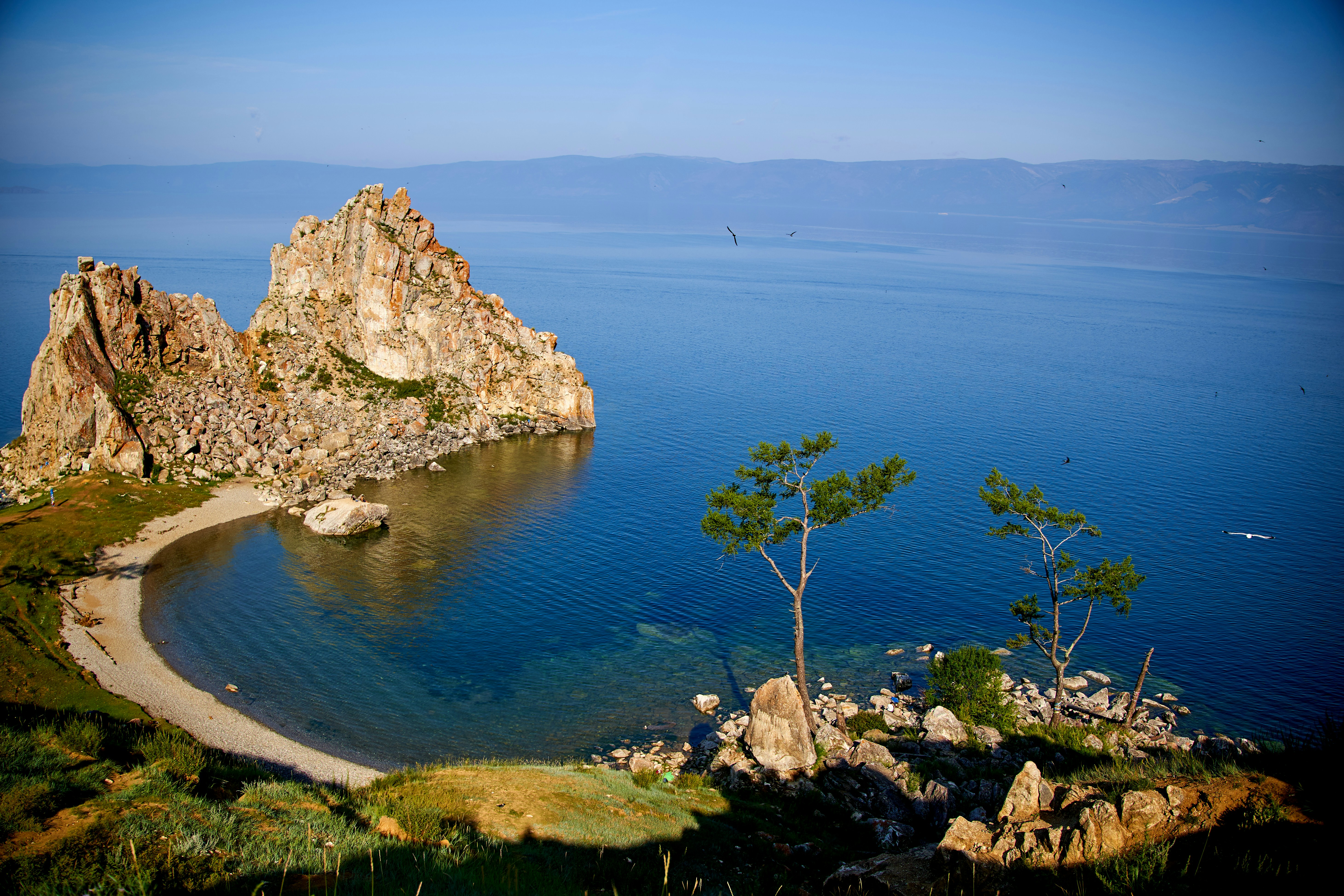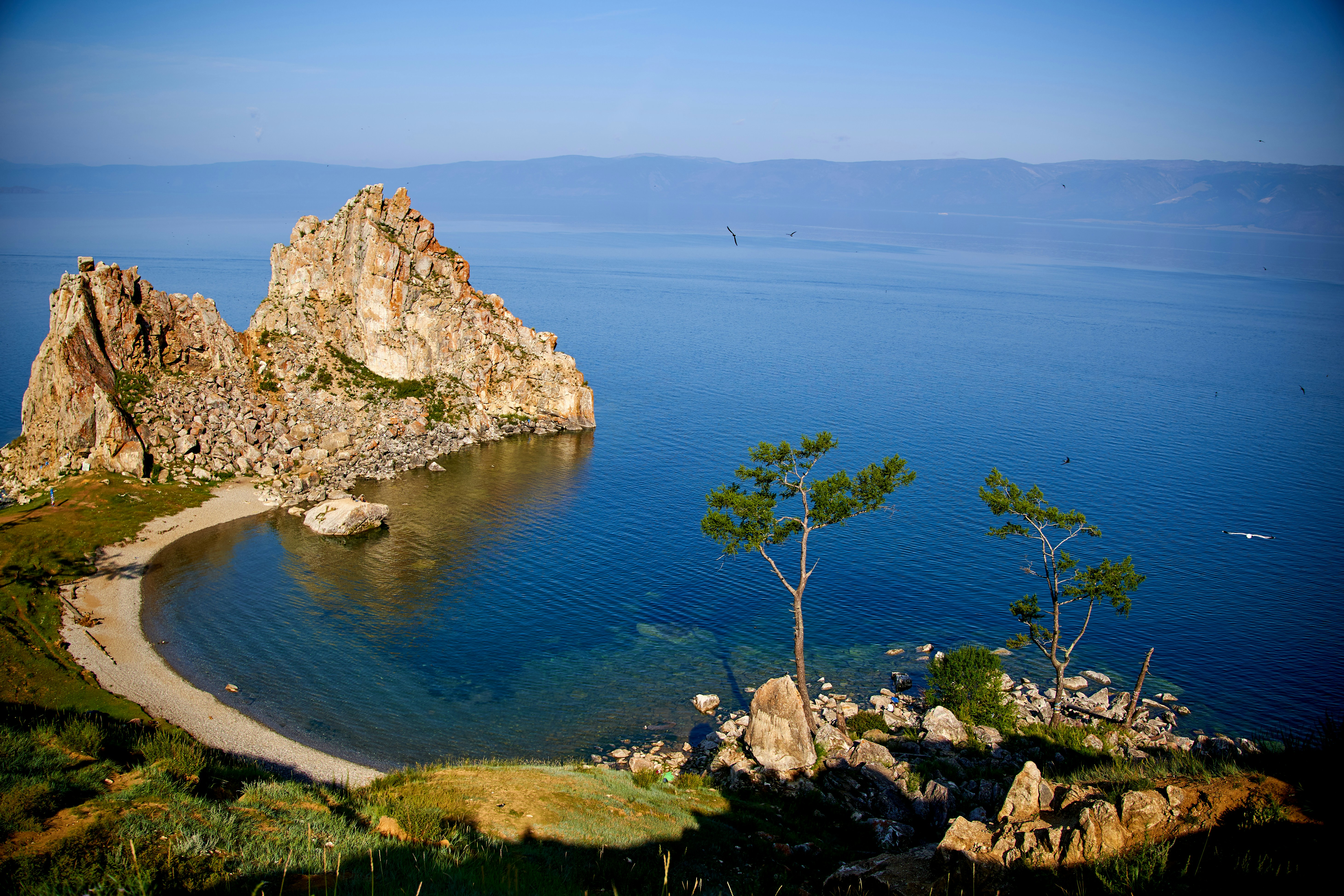Introduction to Lake Baikal
Lake Baikal, located in the heart of Siberia, Russia, is an awe-inspiring natural wonder known for its remarkable depth and ancient origins. Recognized as the world’s deepest and oldest freshwater lake, Lake Baikal plunges to depths of over 1,600 meters and is estimated to be around 25 million years old. This unique combination of depth and age has earned it the moniker “Russia’s Sacred Sea.”
Ecologically, Lake Baikal is unparalleled. It is home to approximately 20% of the world’s unfrozen freshwater reserves, making it a critical resource for life on Earth. The lake’s biodiversity is extraordinary, featuring over 3,700 species of plants and animals, two-thirds of which are found nowhere else in the world. Among its most famous residents is the Baikal seal, or nerpa, the only freshwater seal species globally. The lake’s pristine waters and unique ecological makeup have earned it a UNESCO World Heritage Site designation, underscoring its global environmental significance.
Culturally, Lake Baikal holds a revered place in Russian history and mythology. Indigenous Siberian cultures have long regarded the lake as sacred, attributing to it numerous legends and spiritual significance. The lake is often featured in Russian folklore, literature, and art, symbolizing natural beauty and mystery. Its shores have witnessed the ebb and flow of numerous civilizations, each adding layers to the lake’s rich cultural tapestry.
As we delve deeper into the mysteries of Lake Baikal, it becomes evident that this natural marvel is more than just a body of water. It is a living testament to Earth’s ancient history, a beacon of biodiversity, and a cultural icon. The following sections will explore the enigmatic phenomena and scientific wonders that continue to captivate researchers and enthusiasts alike.
“`
Geological Wonders
Lake Baikal, often referred to as Russia’s Sacred Sea, stands as a testament to the Earth’s dynamic and ever-changing geological processes. Formed approximately 25 million years ago, it is recognized as the world’s oldest and deepest freshwater lake. Nestled within a rift valley, Lake Baikal’s formation is attributed to the tectonic forces that continue to shape our planet.
The lake’s impressive depth reaches up to 1,642 meters (5,387 feet), making it the deepest lake on Earth. This extraordinary depth is a result of the tectonic rift beneath it, which is part of the Baikal Rift Zone. This rift zone is an area where the Earth’s crust is being pulled apart, leading to the formation of a deep basin. As the rift expands, it causes the lake to grow both in size and depth, contributing to its unique geological characteristics.
Lake Baikal is not just a static geological feature; it is a site of active geological processes. The region experiences frequent seismic activity, with numerous fault lines crisscrossing the area. These tectonic movements are responsible for the continuous expansion of the rift valley, making it a living laboratory for geologists studying the complexities of crustal dynamics. Earthquakes in the region, while often minor, are a constant reminder of the immense forces at work beneath the surface.
In addition to its depth and tectonic activity, Lake Baikal plays a significant role in the Earth’s geology. It acts as a natural repository of sediments, providing valuable insights into the climatic and environmental history of the region over millions of years. The lake’s sediment layers offer a chronological record, allowing scientists to reconstruct past climatic conditions and understand long-term geological processes.
Thus, Lake Baikal is not merely a body of water but a geological marvel that continues to intrigue scientists and researchers around the world. Its formation, depth, and ongoing tectonic activity make it a unique natural phenomenon, contributing significantly to our understanding of Earth’s geological history and processes.
Biodiversity and Endemic Species
Lake Baikal, often referred to as Russia’s Sacred Sea, is a biodiversity hotspot teeming with life forms found nowhere else on the planet. As the deepest and oldest freshwater lake in the world, it serves as a sanctuary for an array of unique species. Among its most iconic residents is the Baikal seal, or nerpa, the only freshwater seal species globally. These fascinating creatures have adapted remarkably to the lake’s cold, nutrient-rich waters, making them a symbol of Baikal’s unparalleled ecosystem.
The lake’s rich biodiversity extends well beyond the nerpa. It is home to more than 1,700 species of plants and animals, with two-thirds being endemic. This includes over 50 species of fish, such as the omul and the Baikal sturgeon. The omul, a type of salmonid, is particularly significant to the local economy and culture, often featured in regional cuisine. Additionally, the Baikal sturgeon, another endemic species, plays a crucial role in maintaining the ecological balance of the lake.
Microorganisms in Lake Baikal also contribute to its unique biodiversity. The lake hosts a variety of endemic sponges and bacteria that play a critical role in water purification and nutrient cycling. These microorganisms have evolved over millions of years, adapting to the lake’s specific conditions, thereby maintaining its pristine environment.
Conservation efforts are paramount to preserving Lake Baikal’s unique biodiversity. Several initiatives are in place to protect this delicate ecosystem from threats such as pollution, climate change, and overfishing. The Russian government, along with international organizations, has implemented various conservation programs aimed at reducing human impact and promoting sustainable practices. These efforts are crucial for ensuring that Lake Baikal remains a thriving habitat for its unique flora and fauna.
In conclusion, the biodiversity of Lake Baikal is a testament to the lake’s ancient and isolated nature. The endemic species, from the Baikal seal to the mysterious microorganisms, highlight the ecological significance of this natural wonder. Ongoing conservation efforts are essential to safeguard this irreplaceable ecosystem for future generations.
Cultural and Historical Significance
Lake Baikal, often referred to as Russia’s Sacred Sea, holds profound cultural and historical significance for the indigenous peoples and local communities that inhabit its shores. Among the native Buryat people, the lake is revered as a sacred entity. Their traditional beliefs are deeply intertwined with the natural world, and Lake Baikal is often seen as a living spirit, a source of life and renewal. Rituals and ceremonies are frequently performed to honor the lake’s spirit, seeking its protection and blessings for prosperity and health.
Legends and folklore surrounding Lake Baikal are abundant, contributing to its mystique. One of the most famous legends is that of the Angara River, which is said to be the only daughter of Lake Baikal. According to the tale, Angara fell in love with the Yenisei River and fled from her father, Baikal. In his fury, Baikal hurled a massive rock to block her escape, which still stands today as Shaman Rock. Such stories are emblematic of the lake’s cultural importance, encapsulating themes of love, rebellion, and the powerful forces of nature.
Historically, Lake Baikal has been a focal point for numerous expeditions and scientific inquiries. During the 19th century, Russian explorers and researchers began to document the lake’s unique biodiversity and geological features. The Great Baikal Expedition of 1900-1902, led by renowned scientist Vladimir Obruchev, was pivotal in advancing our understanding of Baikal’s depth and complexity. These early explorations laid the groundwork for modern scientific endeavors and conservation efforts.
Moreover, Lake Baikal has witnessed significant historical events, such as the construction of the Trans-Siberian Railway, which brought increased attention and accessibility to the region. The railway not only facilitated trade and settlement but also exposed the world to the lake’s breathtaking beauty and ecological significance. Today, Lake Baikal continues to be a symbol of natural wonder, cultural richness, and historical depth, bridging the ancient traditions of indigenous peoples with contemporary scientific exploration.
Scientific Research and Discoveries
Lake Baikal, often referred to as Russia’s Sacred Sea, is not just a natural wonder but also a focal point for extensive scientific research. Over the years, this ancient body of water has attracted scientists from various disciplines, leading to groundbreaking discoveries that have significantly enhanced our understanding of limnological processes, biodiversity, and climate change impacts.
One of the most remarkable aspects of Lake Baikal is its unique microbial life. The lake hosts an array of endemic species, some of which are found nowhere else on Earth. These microorganisms play a crucial role in the lake’s ecosystem, contributing to nutrient cycling and the overall health of the aquatic environment. Studies on Baikal’s microbial life have revealed new insights into extremophiles—organisms that thrive in extreme conditions—providing valuable information that could have applications in biotechnology and astrobiology.
Climate studies at Lake Baikal have also yielded significant findings. The lake’s sediments serve as a natural archive, preserving climatic and environmental records over millions of years. By analyzing these sediments, scientists have reconstructed past climate conditions, offering a long-term perspective on climate variability and its drivers. Recent research indicates that global warming is affecting Lake Baikal’s ice cover and water temperature, with potential repercussions for its unique flora and fauna.
Deep-water exploration has further unveiled the mysteries of Lake Baikal. Using advanced submersibles and remote-operated vehicles, researchers have explored the lake’s depths, uncovering geological formations, hydrothermal vents, and unique ecosystems. These expeditions have not only expanded our geological knowledge but also highlighted the lake’s dynamic processes, such as gas hydrate formations and tectonic activity.
International collaborations have played a pivotal role in advancing research at Lake Baikal. Scientists from Russia, Japan, Germany, and other countries have joined forces, sharing expertise and resources. Such collaborations have facilitated large-scale projects, including the Baikal Drilling Project, aimed at extracting core samples from the lakebed to study climatic and geological history. These cooperative efforts underscore the global significance of Lake Baikal and the collective commitment to unraveling its mysteries.
Tourism and Environmental Challenges
Lake Baikal, often referred to as Russia’s Sacred Sea, has seen a significant rise in tourism over the past few decades. As the world’s deepest and oldest freshwater lake, it attracts millions of visitors each year, eager to experience its pristine waters and unique biodiversity. However, this influx of tourists has brought with it a host of environmental challenges that threaten the lake’s delicate ecosystem.
Human activities in and around Lake Baikal have led to increased pollution levels. Waste disposal from tourism facilities, along with littering by visitors, has contributed to the degradation of water quality. Furthermore, the construction of infrastructure to support tourism, such as hotels and transportation networks, has resulted in habitat destruction and increased pressure on local wildlife.
Climate change poses another serious threat to Lake Baikal. Rising temperatures have led to alterations in the lake’s thermal structure, affecting the habitats of many endemic species. Additionally, fluctuating water levels due to changing precipitation patterns and ice cover duration have disrupted the natural balance of the ecosystem. These changes have made the lake more vulnerable to invasive species, which can outcompete native flora and fauna, further destabilizing the environment.
In response to these challenges, several measures are being implemented to promote sustainable tourism and preserve Lake Baikal for future generations. Local authorities and environmental organizations are working together to enforce stricter regulations on waste management and pollution control. Efforts are also being made to promote eco-friendly tourism practices, such as encouraging the use of sustainable accommodations and reducing the carbon footprint of travel activities.
Educational programs aimed at raising awareness about the environmental impact of tourism are being introduced to both visitors and local communities. By fostering a sense of responsibility and stewardship, these initiatives aim to minimize human impact on Lake Baikal’s ecosystem. Additionally, research and monitoring programs are being conducted to better understand the long-term effects of climate change and to develop adaptive management strategies.
While the challenges facing Lake Baikal are significant, the collaborative efforts of various stakeholders offer hope for its preservation. By balancing the needs of tourism with the imperative of environmental conservation, it is possible to protect this natural wonder for the enjoyment of future generations.
Enter your email to get the Latest Updated Exploring News and Topics
Discover more from atozexplore.com
Subscribe to get the latest posts sent to your email.







